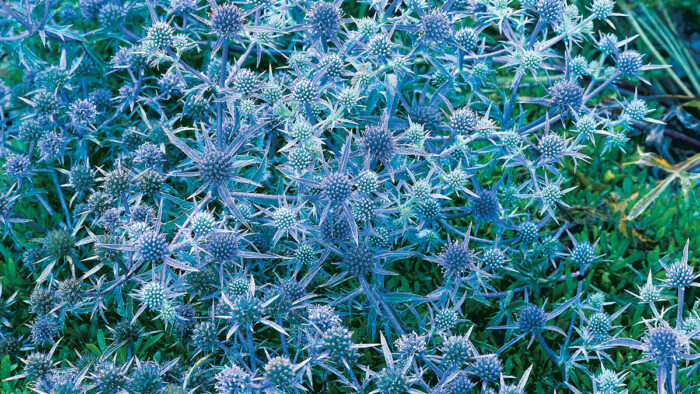
I don’t take an evening paper, but the paper girl stops by my house every afternoon. I just saw her, stroking the golden, silky petals of my California poppies (Eschscholzia californica). And earlier this spring, I caught her surreptitiously caressing the purple, velvety fuzz of the Spanish lavender (Lavandula stoechas). I’m the same way. When I inspect my garden every morning, I use my hands as well as my eyes to reawaken my delight in its beauty. I brush the downy leaves of artemisias (Artemisia spp.) against my cheeks, run the seedheads of blue fescue (Festuca glauca) past my fingertips, and pinch the snapdragons (Antirrhinum majus) to make them roar.
Touching my plants gives me great pleasure, but I’ve yet to find a catalog that describes texture as vividly as color and scent. So over the years, I’ve developed my own list of plants that are fun to touch.
The silvery-gray leaves of lambs’ ears are soft enough to stroke
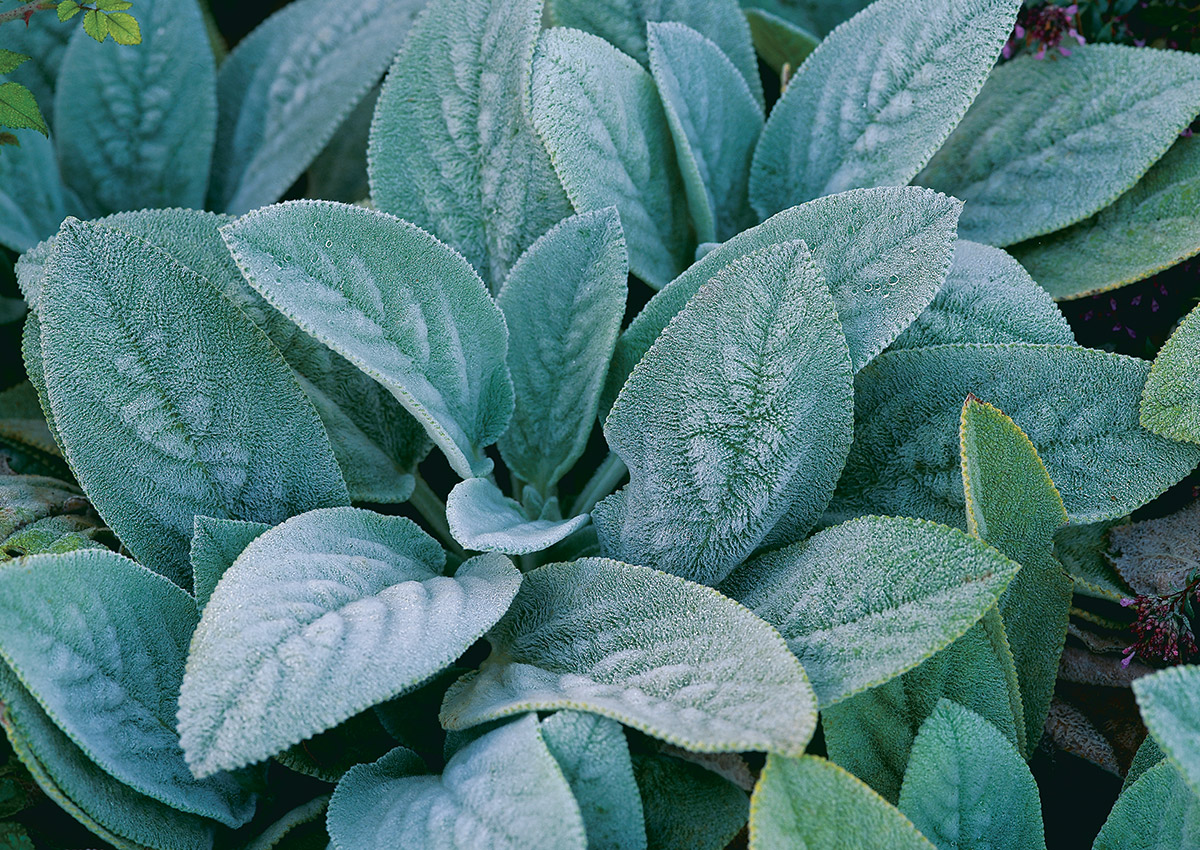
Lambs’ ears grows in a thick, low mat that crowds out weeds. In summer it erupts with gray spikes tipped with tiny, violet flowers. Plant lambs’ ears in a dry, sunny place where you can stroke it as you walk by—in a pot or between stepping-stones. It will soon spread out by rooting stems. It is not invasive, but if it likes your climate, it might reseed itself in a dry, neglected corner. It can survive temperatures as low as –20°F (USDA Hardiness Zone 5), but the leaves get mushy in warm, wet climates. My favorite is Stachys byzantina, the one plant I grow mostly for its texture. Its furry, silvery-gray leaves remind me of the ears on my children’s plush Easter bunnies. Rubbing a leaf on my cheek has the same soothing effect as stroking a bunny’s ear.
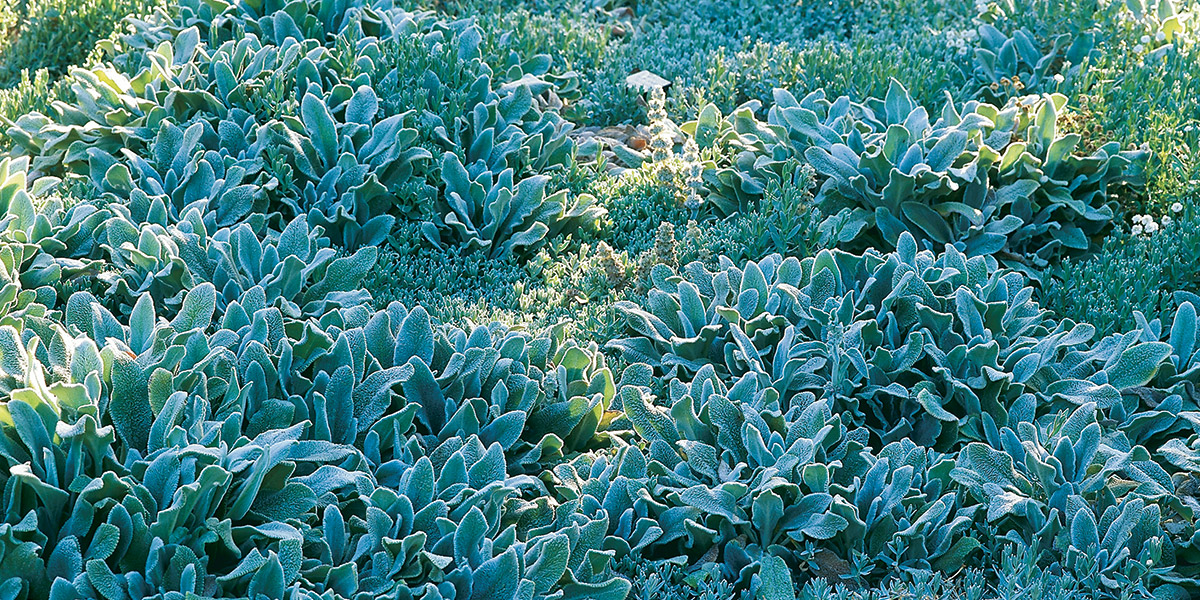
Other gray, woolly-leaved plants have feel appeal
There are many other gray plants with woolly leaves. Most originate in hot, dry climates similar to mine in California’s Central Valley. Their hairy leaves protect them from the extremes of light and temperature of my near-desert climate; the softness is just incidental. But you don’t need hot, dry summers to grow these plants successfully.
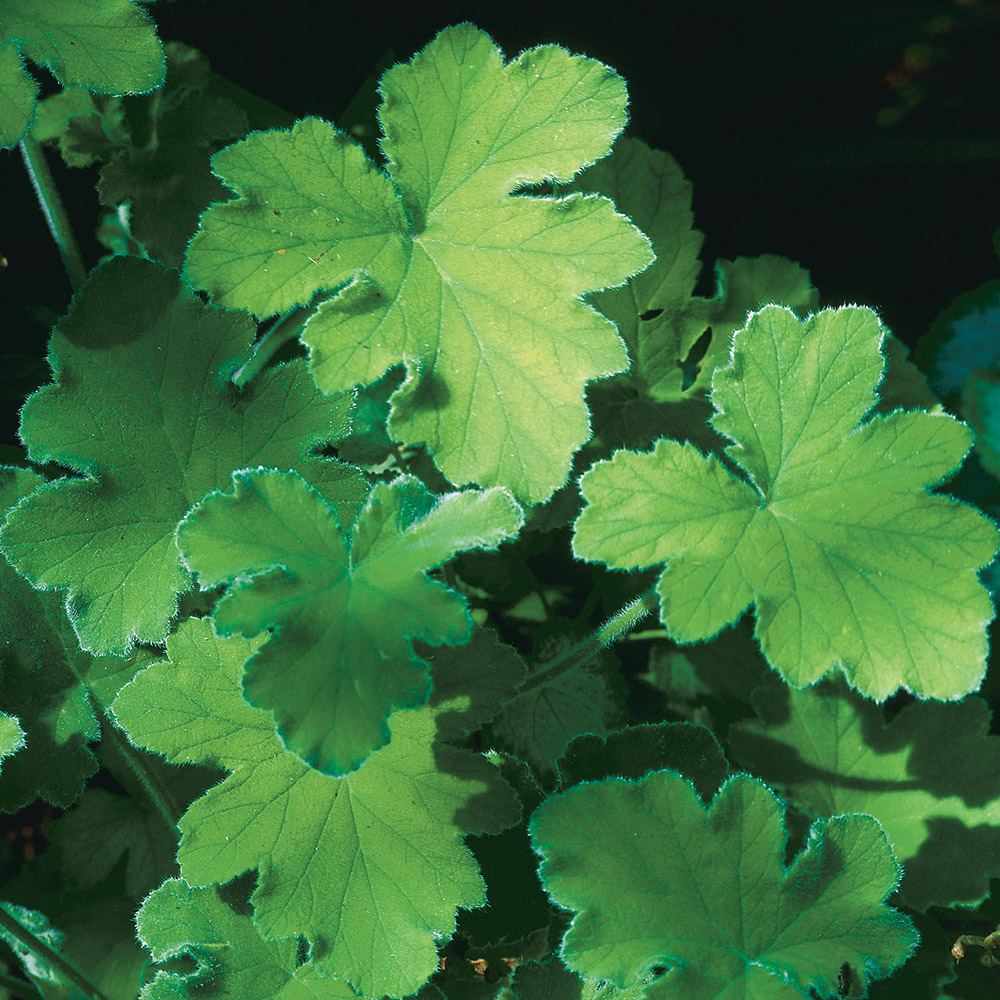
Mint-scented geranium (Pelargonium tomentosum) has large, soft leaves—pale green on top and whitish underneath—covered with long, silky hairs. It reminds me of an angora sweater. With average soil and water, it grows to about 3 feet high and wide. In spring, it bears clusters of dainty, white blossoms. It’s only hardy to Zone 10 (30°F), so treat this frost-tender plant as an annual or grow it indoors in cooler climates.
Another favorite, ‘Powis Castle’ artemisia (Artemisia ‘Powis Castle’), was developed in the cooler, rainier climate of Great Britain. Visitors to my garden can’t pass by it without stroking its finely divided, lacy leaves, with their silky texture and sheen. It sprawls to about 3 feet high and 5 feet wide.
Dittany of Crete, or dittany (Origanum dictamnus), is an ornamental oregano usually grown for its showy bracts. It has soft, furry leaves about the size and shape of a dime. Dittany is low-growing and creeps out about a foot in each direction from its base. Plant it in a hanging pot or let it spill over the side of a raised bed to get the full effect of its cascading branches and to ensure that it gets good drainage. Both dittany and artemisia are only moderately hardy, surviving temperatures down to about 15°F (Zone 8).
Grassy seed heads may tickle your fancy
Not all plants with pleasing textures are hairy. Plants with supple blades of foliage or feathery seed heads evoke a different kind of sensation. When you brush them over your skin, they arouse a light, pleasant tickle.
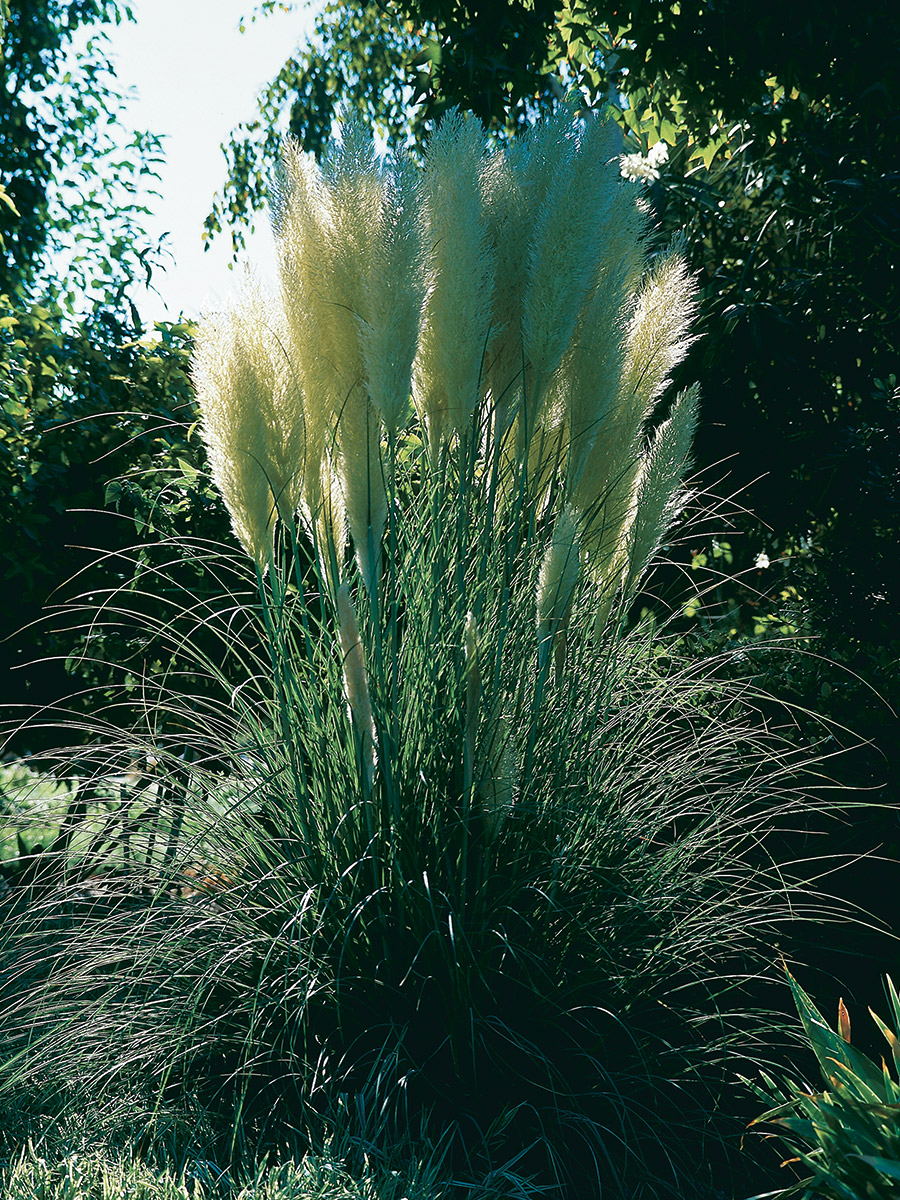
Grasses are interesting all year. I pat the clumps of blue fescue edging my front border whenever I walk by. These hardy grasses (Zone 5) look as soft as powder puffs, but the blades are springy, with slightly prickly tips. I also enjoy the blue-green, white-striped leaves of bulbous oat grass (Arrhenatherum elatius ssp. bulbosum ‘Variegatum’) rippling through my fingers. It is hardy to Zone 6 (–10°F).
But the real pleasure of grasses comes when they are going to seed. Each has a different texture. Blue fescue has fine-grained seed heads while the less hardy (Zone 8, 10°F) Esparto grass (Stipa tenacissima) has stringy, slightly rough seed heads, reminding me of flax or hemp fibers. The flower stalks on my red fountain grass (Pennisetum setaceum ‘Rubrum’, or ‘Cupreum’) remind me of a cat’s tail—the spike is about 6 inches long, with soft awns emerging from the individual seed heads to give it a furry look and feel. This tender grass (Zone 9, 20°F) is usually grown as an annual. It’s at its best in fall, when the flower spikes turn from purple to tan.
Pampas grass (Cortaderia selloana) throws up flossy 1- to 3-foot long plumes with the nubby texture of raw silk that reside atop tall stalks. The plumes come in white, cream, or beige-pink. Pampas grass is stunning to look at, too, especially when backlit. Although garden designers usually relegate it to the back of a border—it can grow up to 20 feet—try putting it at the turn of a path, so that you can stroke the fine, silky plumes as you walk by. But leave plenty of room for the path because the leaves can have sharp edges. I like dwarf pampas grass (C. selloana ‘Pumila”); it grows only to about 10 feet—which means that it’s easier for me to reach the plumes. It is hardy to Zone 5.
Toying with playful plants
I also try to include a few action flowers in my garden—those you can pinch, squeeze, or tickle to produce some reaction. Children particularly like these kinds of plants. One 11-year-old I know loves popping open plump fuchsia buds to see the ballerinas inside. Fuchsias (Fuchsia spp.) come in white and just about every shade of pink and purple. They are prettiest in window boxes or hanging baskets where their flexible, flowering stems can cascade down. These tender plants (Zone 9) prefer partial to full shade, humidity, cool summer temperatures, and lots of water, making them easy to grow only in coastal regions. But you could also grow them in a greenhouse or as houseplants—they are well worth the effort.
My own favorite action flowers are snapdragons. I can’t resist plucking off the dragons to snap at my friends. I refuse to plant the butterfly hybrids in my garden; any snapdragon in my flower beds has to be able to snap its jaws. Snapdragons are usually grown as annual bedding plants, blooming in spring in mild winter climates and in early summer in colder climates. Give them average soil and water.
Touching tours uncover new tactile pleasures
On a noontime walk, one friend discovered that the flowers of the smoke tree (Cotinus coggygria), have the bouncy texture and springiness of a sponge. I try to find the flowers—an airy mass of inch-long filaments covered with tiny hairs—at the peak of their bloom because they lose their bounce and turn crispy as they age. And when I take visitors to tour the arboretum at the University of California at Davis, we always stop to squeeze the bark of the cork oaks (Quercus suber) at the entrance to the campus. When I first started thinking about plant textures, I didn’t realize how many plants I subconsciously enjoyed touching. Now my friends and I have fun searching out new tactile delights.
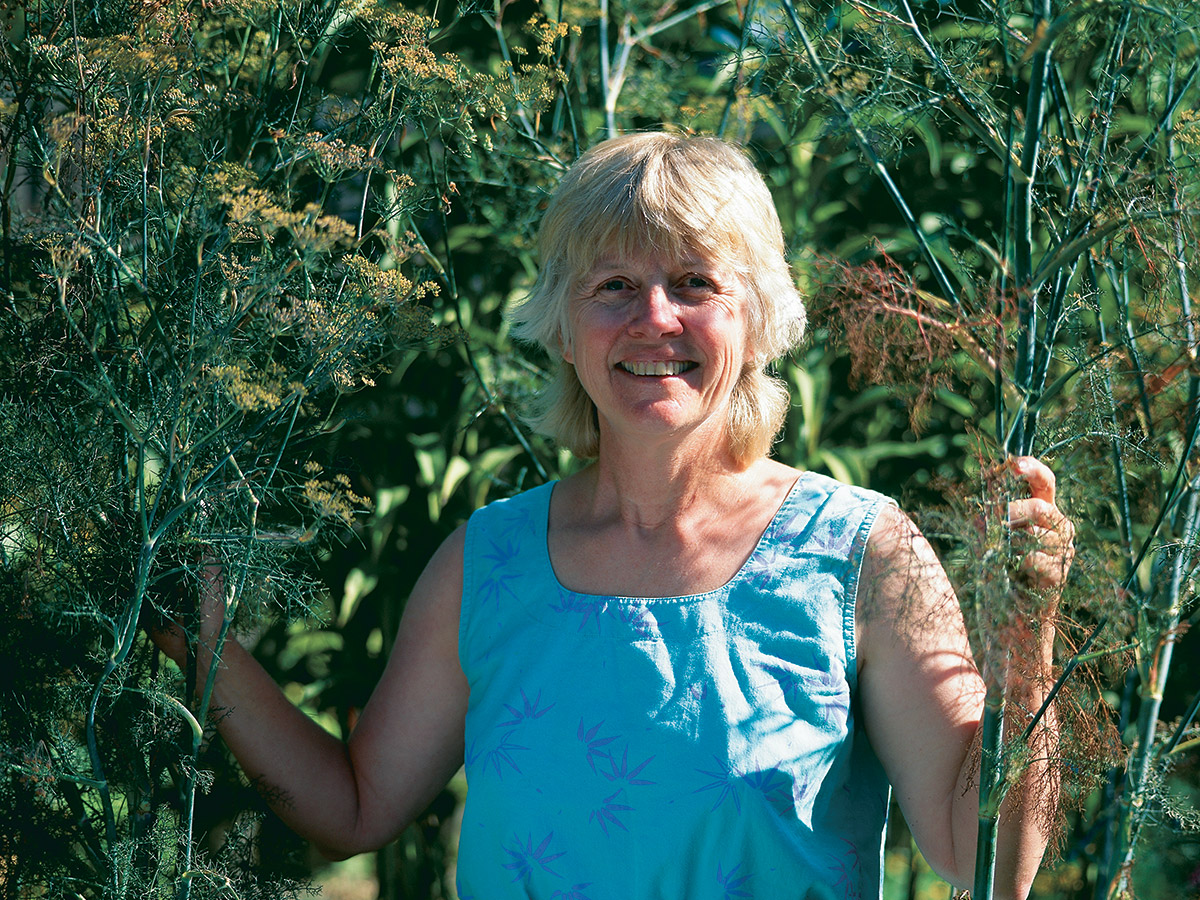
Everyone has a different tactile favorite—the furry foliage of mullein (Verbascum spp.), the rough, aging bark of a Japanese flowering cherry tree (Prunus serrula), the waxy petals of a rose, even the sharp spikes of an Eastern prickly pear cactus (Opuntia compressa). Each day I look forward to discovering new tactile pleasures that await in the garden.
29 plants with pleasing texture
Furry plants
Artemisias (Artemisia spp.)
Dittany of Crete (Origanum dictamnus)
Lamb’s ears (Stachys byzantina)
Mullein (Verbascum spp.)
Pussy willow (Salix spp.)
Mint-scented geranium (Pelargonium tomentosum)
Spanish lavender (Lavandula stoechas)
Tickly plants
Blue fescue (Festuca glauca)
Bulbous oat grass (Arrhenatherum elatius ssp. bulbosum ‘Variegatum’)
Esparto grass (Stipa tenacissima)
Fennel (Foeniculum vulgare)
Red fountain grass (Pennisetum setaceum ‘Rubrum’ or ‘Cupreum’)
Prickly plants
Eastern prickly pear cactus (Opuntia compressa)
Fuller’s teasel (Dipsacus sativus)
Mexican grass tree (Dasylirion longissimum)
Roses (Rosa spp.)
Purple coneflower (Echinacea purpurea)
Sea holly (Eryngium spp.)
Hens-and-chicks (Sempervivum spp.)
Spongy plants
Cork oak (Quercus suber)
Lydian broom (Genista lydia)
Purple poley (Teucrium polium)
Smoke tree (Cotinus coggygria)
Snow-in-summer (Cerastium tomentosum)
Playful plants
Fuchsia (Fuchsia spp.)
Snapdragons (Antirrhinum majus)
Soft, silky plants
California poppy (Eschscholzia californica)
Dwarf pampas grass (Cortaderia selloana ‘Pumila’)
Yarrow (Achillea millefolium)
Margaret Eldred gardens with a keen sense of touch in Davis, California.
All photos: Lee Anne White
Fine Gardening Recommended Products

Planting in a Post-Wild World: Designing Plant Communities for Resilient Landscapes
Fine Gardening receives a commission for items purchased through links on this site, including Amazon Associates and other affiliate advertising programs.
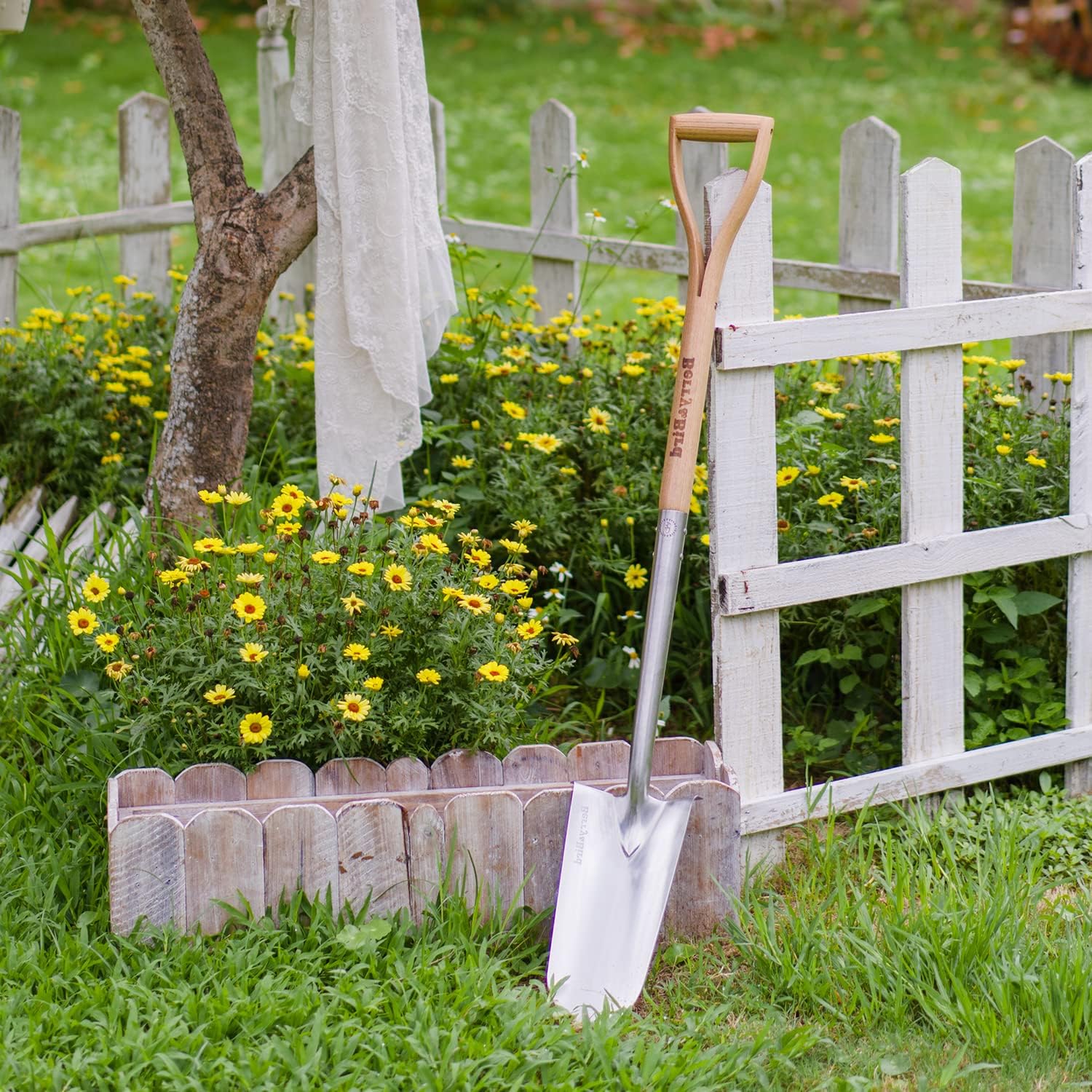
Berry & Bird Rabbiting Spade, Trenching Shovel
Fine Gardening receives a commission for items purchased through links on this site, including Amazon Associates and other affiliate advertising programs.




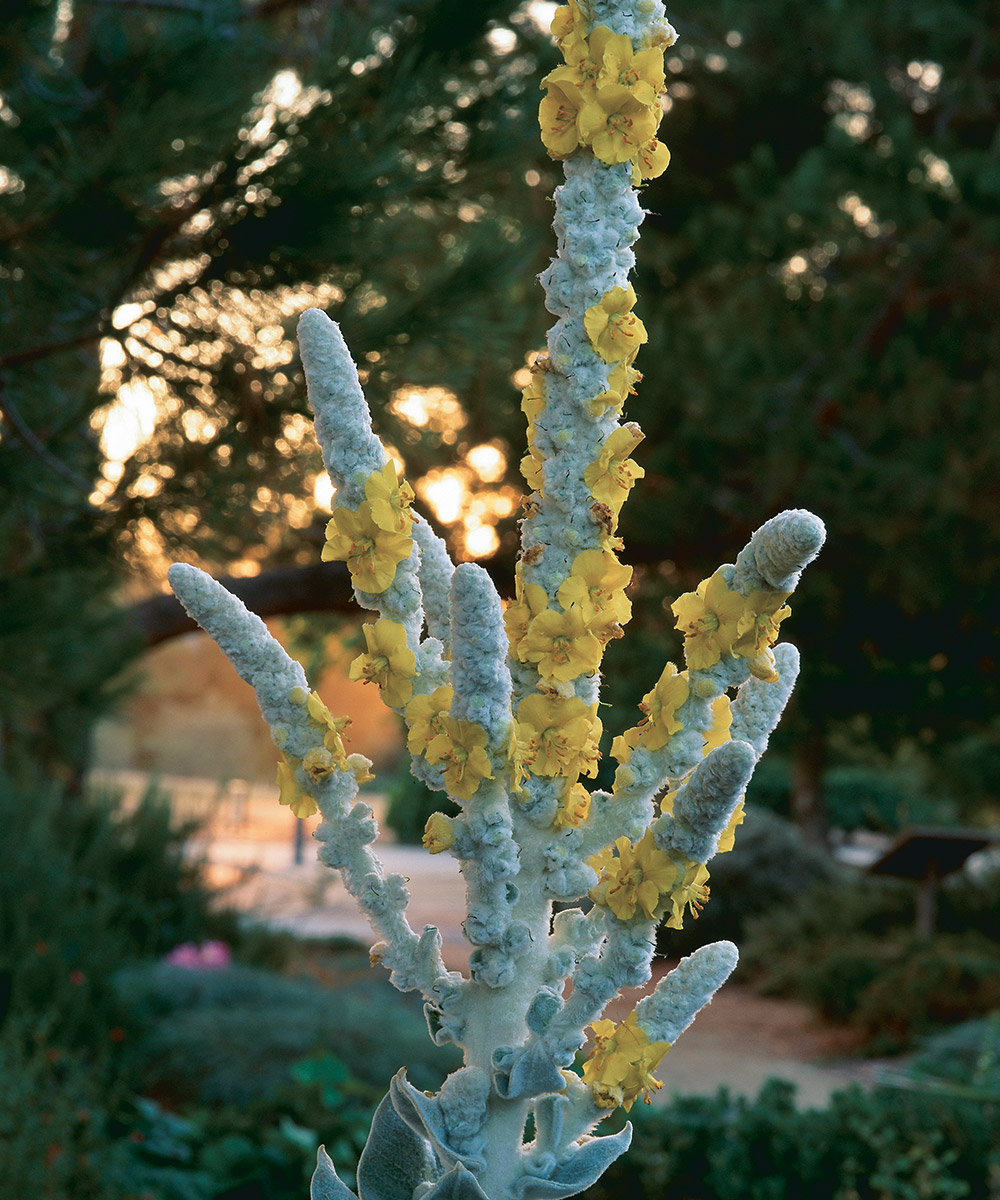
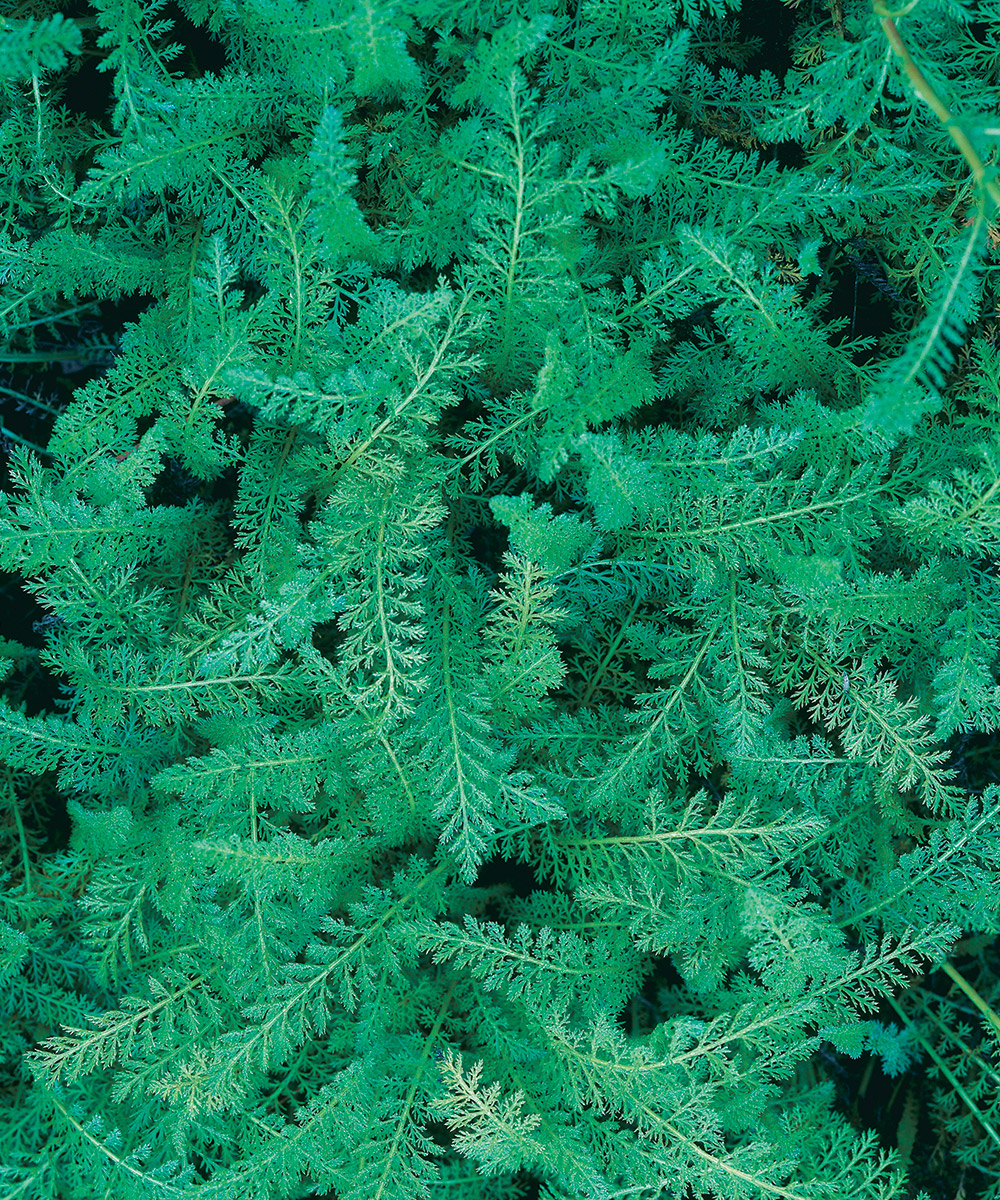


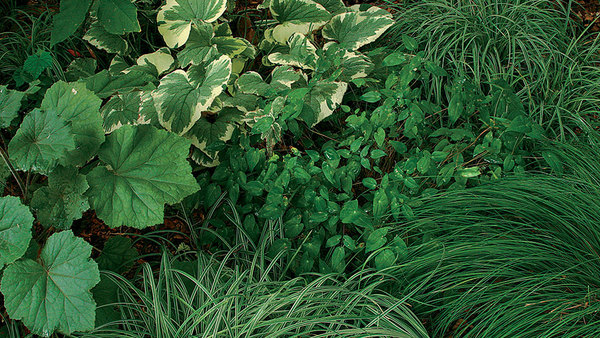
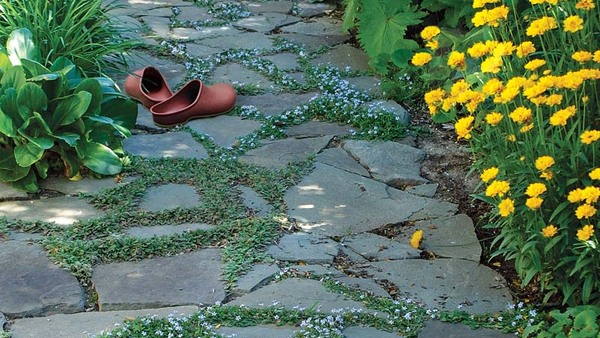
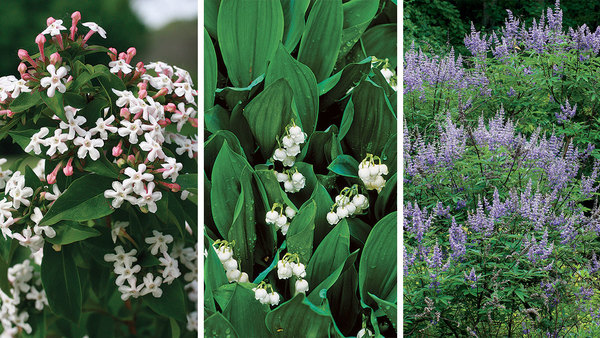
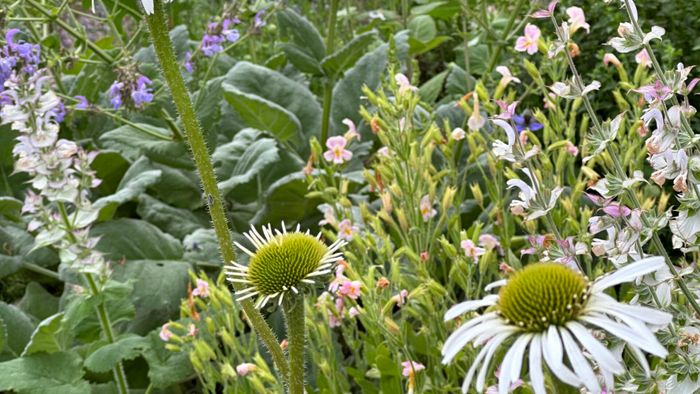
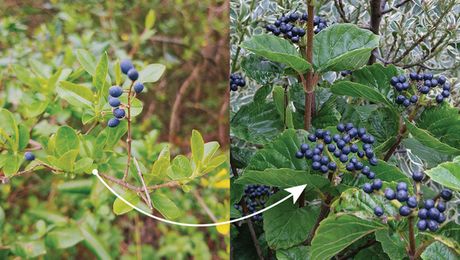
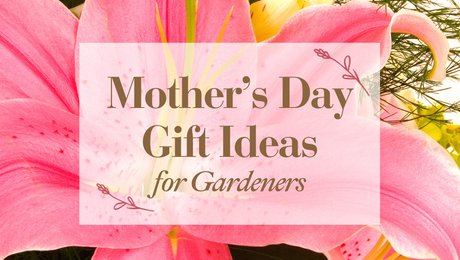










Comments
Loved this article. One more textural plant woolly thyme. Cannot pass it without taking my shoes off and stepping into it.
Log in or create an account to post a comment.
Sign up Log in